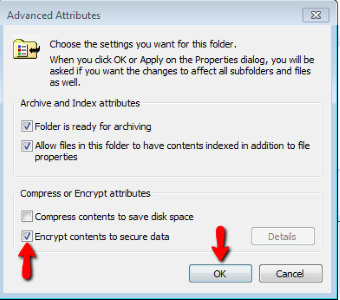

Then click OK.įinally, click Apply and select Apply changes to this folder, subfolders and files.


Right-click on the item and select Properties.Ĭlick Advanced to open up the Advanced Attributes settings.Ĭheck the box for Encrypt contents to secure data. Here’s how to encrypt files in Windows:įind the folder or file you want to encrypt in Windows File Explorer. The easiest way to encrypt files and folders is to use Windows’ built-in encryption. Then, we’ll look at other ways to protect your sensitive documents and block hackers. First, let’s learn how to lock folders using Windows’s built-in encryption tool. There are several ways to put a password lock and folder lock on documents on your PC. How to lock your Windows files and folders And check out our guide to password locking Word documents if your security needs are specific to the Microsoft Office suite. Then, get a password manager to keep track of them all. So, whichever method you choose, be sure to create unique, hard-to-crack passwords and use two factor authentication. Encryption is like randomly shuffling all the letters of a document and making it so that only someone with a decryption key can unscramble the data and read the document.īut encryption and password protection are only as strong as the passwords used to secure their contents. Unlike password protection, encryption scrambles the contents of individual files so that the data is unreadable. Locking files in a password protected folder is like putting items in a safe - access is limited to those who know the code that opens the safe. Password locking files and encrypting files are both ways to protect sensitive information. Encryption is a more secure form of protection, because data is scrambled using an encryption algorithm and can only be unscrambled and accessed with a decryption key. Password protection means that only those who know the password can access the information. What is the difference between password protection and encryption? And it’ll prevent you from sharing important files with anyone inadvertently. Password locking files also strengthens your privacy when you share your PC with family members or anyone else. Securing personal information behind password protection and encrypting files doesn’t just help keep your data safe if you’ve been hacked. Advanced password cracking techniques mean that determined hackers can access folders and files on vulnerable computers. Just as you wouldn’t leave piles of cash or private documents lying around your house in plain sight, you shouldn’t rely on just your Windows login password to keep your most sensitive data secure.


 0 kommentar(er)
0 kommentar(er)
